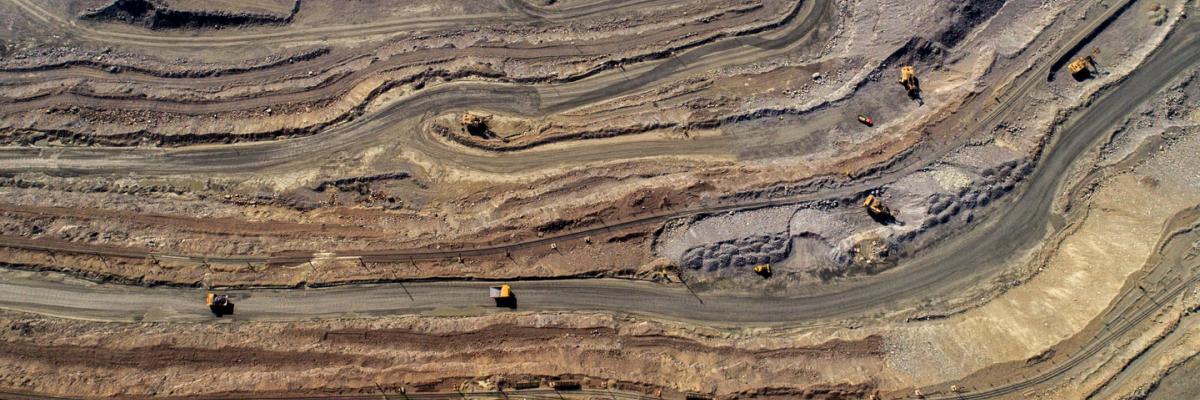Case Studies
The Centre provides specialist consulting services in the broad field of applied economics.
In addition to contract research opportunities the Centre also conducts non-commissioned research in areas it has developed substantial expertise and experience over the years.

Review of farm assistance program
Client: Commonwealth Government
Area of focus: Program assessment
Overview: The Centre was commissioned to review the performance of a farm assistance program against its stated objectives in a 5 years longitudinal study. Some 1,100 farmers were involved over the 5 year period. As part of earlier reviews of the program, we conducted focus groups with various stakeholders (i.e., Centrelink staff, Rural Financial Counsellors, third party stakeholders) throughout Australia, surveyed RFCs, conducted mail-based surveys and telephone interviews with farmers, and analysed existing program administrative data.
Outcome: Recommendations as to how to improve the performance and administration of the program were subsequently made with virtually all of the recommendations being adopted. The Centre's reports have been tabled in Parliament.
Strategic reviews: Labour market programs, workforce participation
Area of focus: Employment, skills audit, workforce participation
Overview: The Centre has undertaken major strategic reviews of state-based labour market programs and assistance measures, including the Adult and Community Education program, Workforce Participation Partnerships and South Australia Works.
Outcome: The results and recommendations of each review have been accepted by the relevant agencies to improve the effectiveness of outcomes.
Skills & HR audit: Heavy industry sector of the Upper Spencer Gulf Region
Area of focus: Employment, skills audit, workforce participation
Overview: The Centre was commissioned to consider the demand for a skilled workforce over the period 2006 to 2010 and the demand for education and training for the Heavy Industry sector of the Upper Spencer Gulf Region (USG) - comprising Whyalla, Port Augusta, Port Pirie and Roxby Downs. The heavy industry sector is a significant sub-contracting sector to the growing mining industry in South Australia. Current trends in education and training effort were also considered to assess future training requirements.
Outcome: A labour demand estimation model was developed to provide estimates of growth in the demand for labour using data derived from a survey of USG companies.
Regional skills audit
Area of focus: Employment, skills audit, workforce participation
Overview: The Centre was commissioned to conduct an employment and skills mapping for a region outside the Adelaide metropolitan area to identify areas of current and future skills shortages, and related local labour market issues. The Centre analysed existing employment data to develop a profile of employment in the region, analysed existing education and training data to identify existing training "effort", developed and conducted a detailed survey (postal and on-line) of employers in the region to identify and quantify labour and skills needs, and conducted face to face interviews with employers to further explore relevant labour market issues.
Statistical modelling
Client: Commonwealth Government
Area of focus: Employment, skills audit, workforce participation
Overview: The Centre developed a statistical model for an Australian Government department to adjust the performance of labour market assistance providers for the demographic characteristics of their clients and the macroeconomic conditions of their region.
Outcome: The assessment mechanism was used as part of the performance assessment process for tender assessments.

Gross economic impact of the Angas Zinc Mine
Client: Terramin Australia
Area of focus: Economic impact assessment
Overview: The SA Centre for Economic Studies was commissioned to estimate the gross economic impact of the proposed Angas Zinc Mine on the wider Strathalbyn Economy. The mine is located about 2 kilometres outside the rural township of Strathalbyn. At the time it was expected to produce 319,000 tonnes of zinc concentrate and 122,300 tonnes of lead-copper over its seven-year life span. The life span may be extended if further drilling reveals additional reserves in the area. The Strathalbyn economy is to a significant extent dependent on agriculture activities with there being little other mining activity in the region. The mine therefore has the potential to diversify the economic base of the region.
Outcome: The Centre used input output tables to estimate the direct and indirect employment and gross state product arising from expenditures on the operation and construction of the proposed mine.
Gambling
Statewide impact assessment
Client: State Treasury
Area of focus: Gambling
Overview: The Centre was commissioned by a State Treasury to analyse the economic, financial and social impact of the gambling industry within the state and to prepare recommendations to ensure consumer and player protection when gambling. This study followed two similar studies in other Australian states.
Community impacts of electronic gaming machine gambling
Client: Victorian Gambling Research Panel
Areas of focus: Gambling
Overview: The Centre was commissioned to consider the community impact of EGM gambling by comparing the starkly different gambling environments that exist in Victoria and Western Australia. Relative differences in gambling expenditure, employment levels and problem gambling were analysed at the State level. Four matched regions in each State were also identified and compared for, inter alia, differences in community attitudes, participation in gaming, the change in local clubs, visits to local GPs, and use of ATMs in hotels and clubs. Regional level data was compiled from community surveys undertaken to assess attitudes and behaviours relevant to participating in gambling, supplemented by interviews with various stakeholders, the gambling industry, surveys of local GPs, financial counsellors and gambling counsellors.
